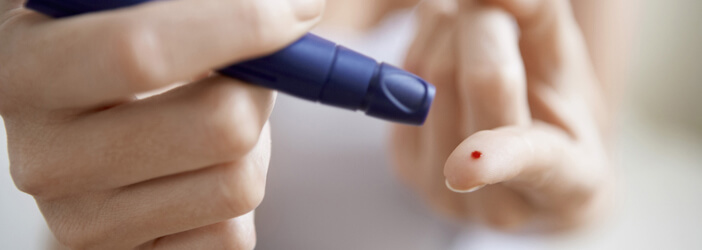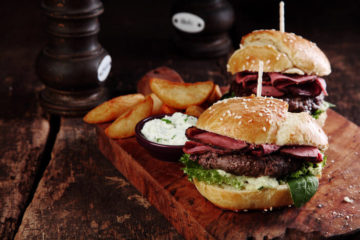Fatty liver disease - nutrition and lifestyle as therapy

What is a fatty liver?
In a fatty liver, energy (in the form of fat) is stored in the liver cells and hinders their function. It is caused by overeating, excessive alcohol consumption and an unhealthy lifestyle. The stress on the liver leads to metabolic disorders and develops into an inflammation (hepatitis). In this article we give you a few simple and natural tips for prevention and intervention.
How widespread is fatty liver disease?

About one in four people in the western world has a fatty liver without knowing it. Fatty liver disease is now the most frequently diagnosed cause of chronic liver disease. Parallel to this, the number of metabolic diseases, such as obesity and diabetes, has risen in recent decades. Fatty liver disease is becoming increasingly established in modern society, precisely because many people are unaware they have it.
Who is particularly at risk?
Women possess smaller quantities of the alcohol digesting enzyme ‘alcohol dehydrogenase’, in their liver and stomach than men. Since alcohol is a cause of fatty liver, it follows that women are at higher risk than men. The alcohol they consume cannot be processed as quickly and represents a higher burden on their liver.
In addition, previous illnesses, such as hepatitis, weaken the liver. This makes the liver less resistant to additional stresses caused by over-eating, poor nutrition and excessive alcohol consumption.
Our everyday life as cause

Consumption and excess dominate our everyday lives. In the morning we might pick up a croissant at the train station, then grab a subway for lunch and reach for a frozen pizza in the evening. These days everything has to be instant and unfortunately this reduces the quality of the food we eat. Lifestyles like this are strongly linked to fatty liver disease. Alcohol consumption and overeating lead to an excess of fats in the body. Together with the toxic products released when alcohol is broken down, the liver becomes overtaxed.
The top 3 causes of fatty liver
1. Excessive consumption of alcohol
Even a small intake of alcohol and its toxic decomposition products put a strain on the liver. 0.5 litres of beer a day for women, and 1 litre for men are already considered to be harmful to the liver. 2 litres of wine a day over a period of 3 weeks lead to the development of a pronounced fatty liver.
2. Overeating
This is where the body is supplied with more energy than it requires (positive energy balance). Here the macronutrients in the food are relevant. Excess fats are stored mainly in the liver. Carbohydrates play a central role in the body as a building material and energy source. They are used for energy and are also used to form fatty acids, amino acids and proteins. An excess of these fatty acids may also get stored in the liver.
3. Pre-existing metabolic diseases
Metabolic disorders i.e. those that throw processes in the body out of balance can increase the likelihood of developing a fatty liver. This includes, the well-known disease diabetes, in which sugar is not broken down in the body. Iron storage disease (hemochromatosis) leads to an increased formation of new connective tissue in organs. Since, this is also a consequence of fatty liver, the liver experiences a double burden.
“You must offer something good to your body so that your soul wants to live in it.”
– Winston Churchill
What happens in our body?
Course of the disease
Fatty liver
Fats are deposited in the liver cells and disturb their functioning. In medicine one speaks of either a simple or a pronounced fatty liver. These differ with regard to the amount of fat present in the liver. In a simple liver, about 10% of the liver weight consists of fat. The pronounced form has about 20% fat.
Liver inflammation
An untreated fatty liver carries a risk of inflammation (hepatitis). This results in swelling and incipient destruction of the liver cells. The damage to the liver cells leads to scarring, which doctors refer to as fibrosis. During this process, the body builds up connective tissue, in an area where the blood circulation and function is already restricted. At this point, the damage becomes permanent..
Cirrhosis of the liver
The persistent inflammation of the tissue leads to a complete change in the structure of the liver. The replacement of liver cells with connective tissue leads to functional limitations, which the fatty liver can no longer compensate for. The swelling decreases and the liver shrinks. This leads to serious complications with a sometimes fatal outcome.
What is an alcoholic fatty liver?
As the name suggests, an alcoholic fatty liver is caused by drinking too much alcohol . The toxic products formed during the breakdown of alcohol put a strain on the liver, it can no longer fully perform its main tasks of detoxification and control of bodily functions. The liver then stores fat and the toxic by-products of alcohol damage the liver cells.
Alcoholic vs. non-alcoholic fatty liver
| Alcoholic fatty liver | Non-alcoholic fatty liver | |
|---|---|---|
| Reason | Excessive alcohol consumption | Unhealthy and too much food |
| Consequences for the body | Fat storage especially in the liver | Being overweight, which puts the whole body under stress |
| Process and harm caused | Fatty degeneration and functional impairment + additional toxic load | Fatty degeneration and functional impairment |
| Treatment | Stop drinking alcohol immediately, healthy eating | Fundamental changes to lifestyle and nutrition |
The role of diabetes

3 out of 4 people with type 2 diabetes also have a fatty liver. In diabetics of this type, the hormone insulin no longer works properly or is not produced sufficiently. Since insulin is responsible for regulating blood sugar levels, this has consequences for the fat metabolism. Experts refer to this as insulin resistance, in which increased fats are released in the body. As a result, the liver cells absorb more free fats. These factors mean that people with diabetes are more likely to suffer from a fatty liver. When the body has developed a certain resistance to insulin, more iron is also deposited in the liver. This leads to the formation of harmful substances (oxide radicals) that promote an inflammatory reaction. Diabetics therefore also have a higher risk of liver inflammation. As a rule, type 2 diabetes is found in older people, but with an unhealthy diet, children of 15 or even younger can develop diabetes and can find themselves on the path to a fatty liver.
What are the possible symptoms of fatty liver disease?
- Pressure pain due to swelling, loss of appetite and/or fatigue, dependent upon the severity and damage
- Often there are no or few symptoms.
- A diagnosis can only be made after a blood test, biopsy or ultrasound examination of the upper abdomen
- This makes the diagnosis much more difficult and means it commonly goes undiagnosed
How do I get rid of fatty liver disease?

The treatment is simple – exercise and diet. About 200 minutes of moderate exercise a week and a reduction in food intake are essential. The aim is for your body to consume more energy than it takes in. In precise terms, you should reduce your daily calorie intake by about 30%, which corresponds to about 750-1000 kcal/day. In the case of alcoholic fatty liver, you must stop drinking alcohol. In addition, a healthy balanced diet will significantly help to regenerate your body.
In milder cases, the above measures can help to regenerate a scarred liver. In the case of cirrhosis, they will prevent the scarring from worsening.
Frequently Asked Questions
What should I consider when choosing my food?
- Avoid ready-made product: The idea of cooking from scratch may seem daunting at first, but when you get used to it, it becomes easier and the benefits are worth it. You know exactly what is going into your body and you can eat with a clear conscience. Ready-made products and fast food contain the type of fats and carbohydrates that are responsible for fatty liver. Here we show you how you can eat healthily on the go and how you can easily prepare your meals.
- Carbohydrates: we often talk about fats, but excess carbohydrates are also stored in the fat stores. Beware – the simple sugar glucose is hidden in all sorts of products e.g. sauces and ketchup.
-
-
Which eating habits can help me?
- Concrete mealtimes: schedule your meals and try dividing them into 3-5 larger ones. This way you can keep track of exactly how much you are eating and you will find it easier to avoid the smaller snacks.
- Conscious eating: set aside time for your meal and focus your full attention on it. That way you really notice what you are eating.
How do I find out, if I have a fatty liver?
The only conclusive way to diagnose a fatty liver is with a liver biopsy, a blood test or an ultrasound examination. But to assess if you are at risk you can reflect and ask yourself the following questions:
Is my diet healthy?
Am I overweight?
How much alcohol do I really drink?
Sources
Weiß, J., Rau, M., Geier A. (2014): Nichtalkoholische Fettlebererkrankung – Epidemiologie, Verlauf, Diagnostik und Therapie. Deutsches Aerzteblatt Int 2014; 111(26): 447-52; DOI: 10.3238/arztebl.2014.0447
Schneider, A., Singer, M., Teyssen, S. (2005): Alkohol und Alkoholfolgekrankheiten: Grundlagen-Diagnostik-Therapie
Pusl, T., Rust, C. & Parhofer, K. Diabetologe (2009) 5: 653. https://doi.org/10.1007/s11428-009-0457-2
https://www.gesundheit.gv.at/krankheiten/leber/alkoholische-lebererkrankung (Zugriff: Juni 2019)


